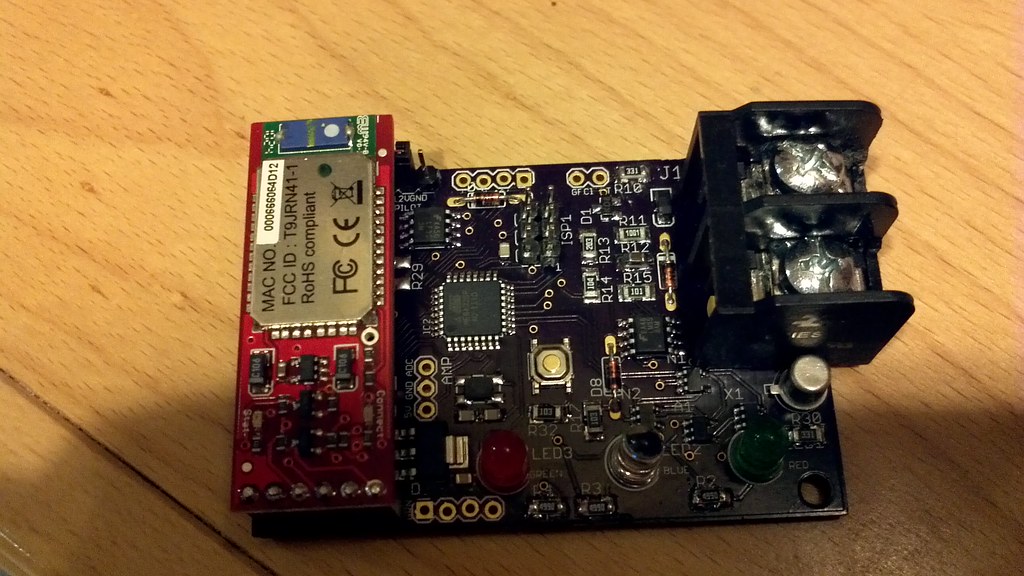charlestonleafer
Well-known member
Are you ready to sell them yet???



But is that max dictated by the Leaf or by the EVSE?chris1howell said:12a is the max at 120v under normal circumstances. Lincomatic discovered an issue where the car would draw higher under low voltage brownout conditions. I believe he saw 17A during a brownout on a very hot day.
We know that the EVSE sets the max, but it doesn't necessarily mean that the 3.3KW charger will draw whatever the max current set by the EVSE, right? The question is whether the 3.3KW charger maxes out at 12A on 120V or can it go to 16A at 120V if the EVSE says it has 16A to give.chris1howell said:The EVSE sets the max current.
The bottom line is that the car will, under low-voltage conditions, draw more current than the EVSE is saying that it can. That seems like a clear violation of the J1772 standard.fotajoye said:Not sure it's a bug; I would bet it's designed to work on a common house whole 120vac circuit which is 15amps, not a dedicated commercial circuit that is normally 120VAC 20amps. BTW, you can go to evseupgrade.com and have your Nissan Brick modded to work on 240vac at full charge current and also maintain the current 120vac 12amp input.
I was surprised by this as well. Is that a needed feature though considering that when you pull it out the communication pin breaks first shutting things down?garygid said:It also appears that the LEAF does not shut off charging
(if any) when the nozzle's Release Button is pressed.
Not as far as the evidence has suggested. If the EVSE is sending a 16 amp signal but 120 volts, the Leaf will draw a maximum of 12 amps. If the voltage drops, why wouldn't it be acceptable to go up-to 16 amps per the EVSE? Now, if you tell it 12 amps, it should stay at 12 amps regardless of the voltage.DoxyLover said:The bottom line is that the car will, under low-voltage conditions, draw more current than the EVSE is saying that it can. That seems like a clear violation of the J1772 standard.fotajoye said:Not sure it's a bug; I would bet it's designed to work on a common house whole 120vac circuit which is 15amps, not a dedicated commercial circuit that is normally 120VAC 20amps. BTW, you can go to evseupgrade.com and have your Nissan Brick modded to work on 240vac at full charge current and also maintain the current 120vac 12amp input.
Also, if it is designed for a residential 15A circuit, drawing more than 12 amps is probably a bad idea. It really should never draw more than 12 amps.
Unfortunately, if your house has 110 volts instead of 120, due maybe to being out in the boonies so you have a log utility run, this would mean that you would charge ~10% slower. Maybe this is why Nissan decided to try to pull the full wattage.
Sounds as if, for whatever reason, the charger uses an algorithm which pays attention to the pilot current offering when in L2 mode, but it ignores the pilot and charges at fixed power in L1 mode. While this is not strictly kosher, it probably won't result in significant deviation or blown breakers if the voltage stays within the tolerance the utility is supposed to provide (in the US, within 5% of nominal 120V, or 114 to 126V).DoxyLover said:My understanding is that there is a "bug" in the on-board charger. It will draw only 12A at 120V (1.44KW), even if offered more by the EVSE. However, if presented with LESS THAN 120V (but above some minimum), it will draw more than 12A (in trying to do 1.44KW), even going past the offer from the EVSE!
Remember, watts = volts x amps. If the voltage drops, you need to pull more amperage to make the same wattage. The on-board charger is trying to do 1.44KW, even at lower voltages.
Are you sure about that? We discussed this, but there was no conclusion. You WOULD be in a good position to have verified this. It would be a significant fault on the car's part if it didn't.chris1howell said:...
- As gary mentioned the button on the handle does not stop charging as recommended by J1772.
...
Enter your email address to join: